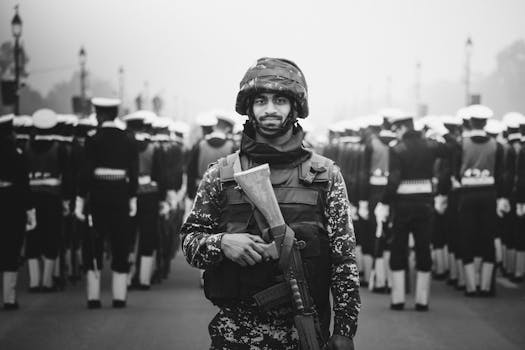The Phantom Jet and the Unseen Scars: Why Pakistan Must Choose Peace
-
 Chief Editor
Chief Editor - 28 May, 2025

The dust has barely settled on the “Four-Day Conflict” of May 2025, a near-war that gripped the subcontinent and sent shivers down the spines of global powers. While a ceasefire now holds, the underlying tensions remain, fueled by a narrative that, in Pakistan, seems to be stuck on a single, disputed point, rather than acknowledging the harsh realities of the recent crisis.
Let’s be clear: this latest escalation was not an unprovoked act by India. It was a direct consequence of Pakistan’s long-standing policy of sponsoring terrorism, a policy that has bled India for decades and culminated in the horrific events in Pahalgam.
The Bloody Trail: Pakistan’s Sponsorship of Terrorism
For too long, India has been a victim of cross-border terrorism, with groups openly operating from Pakistani soil. We’ve seen it time and again: from the brazen 2008 Mumbai attacks, orchestrated by the Lashkar-e-Taiba (LeT), to the 2016 Uri attack, and the 2019 Pulwama suicide bombing by Jaish-e-Mohammed (JeM). These are not isolated incidents; they are part of a deliberate strategy. Pakistan has consistently denied its involvement, yet the evidence, often presented by international bodies and intelligence agencies, paints a stark picture. The UN and the US have designated groups like LeT as international terrorist organizations, and their leadership often finds refuge and operates with impunity within Pakistan.
The recent Pahalgam attack in Kashmir on April 22nd, 2025, was a chilling reminder of this grim reality. Twenty-six innocent civilians, primarily tourists, were brutally murdered. Eyewitness accounts spoke of attackers specifically targeting Hindus, asking for their religion before shooting them point-blank. It was a grotesque act of terror, designed to sow fear and communal discord. This wasn’t just another skirmish along the Line of Control; it was a direct assault on the very fabric of peace and normalcy India strives to build in Kashmir.
India’s Decisive Response: A Message Sent Loud and Clear
India’s patience, understandably, ran thin. In the wake of the Pahalgam massacre, Delhi launched Operation Sindoor, a robust and calculated response. Beginning May 7th, India carried out a series of precision strikes, targeting terrorist infrastructure deep within Pakistan and Pakistan-administered Kashmir. This wasn’t about territorial conquest; it was about dismantling the machinery of terror.
Reports indicate that India inflicted heavy casualties on terrorist camps, including the headquarters of groups like Jaish-e-Mohammed and Lashkar-e-Taiba. Furthermore, the Indian Air Force demonstrated an unparalleled ability to strike at will, impacting Pakistani army bases and crucial air defense systems. On May 9th and 10th, the IAF showcased its advanced capabilities, launching long-range, precision weapons that hit targets across Pakistan’s length and breadth. Airbases, command centers, and radar installations were reportedly hit, forcing the Pakistan Air Force to relocate surviving aircraft. This was a clear message: India possesses the capability and the resolve to retaliate effectively and penetrate Pakistan’s defenses.
The Phantom Jet and the Real Story
Here’s where the narrative in Pakistan often goes off the rails. Many Pakistani intellectuals and commentators seem fixated on a supposed Indian jet that was “downed” during the conflict. While India has maintained a measured silence on the matter, neither confirming nor denying any aircraft losses, the focus on this single, unverified incident completely misses the forest for the trees.
The real story, the one that should be dominating discussions in Pakistan, is the undeniable fact that the Indian Air Force was able to strike deep and wide across Pakistani territory on May 9th and 10th. The IAF demonstrated its capacity to circumvent and neutralize Chinese-supplied air defense systems like the HQ-9, a capability that has undoubtedly set Pakistan’s military back significantly. The question isn’t whether one jet was downed; it’s why India could operate with such freedom and precision in Pakistani airspace. That’s the strategic reality, and it’s a sobering one for Islamabad.
A Path to Peace: Stop the Madness, Start Talking
The recent conflict, despite its brevity, was a stark reminder of the dangerous precipice India and Pakistan often find themselves on. Both are nuclear-armed nations, and escalation carries unthinkable consequences. The cycle of terrorism, retaliation, and counter-retaliation must end.
Pakistan needs to make a fundamental shift. It must unequivocally cease its sponsorship of terrorism against India. This means dismantling terror infrastructure on its soil, prosecuting those responsible for attacks against India, and genuinely working to prevent the infiltration of militants across the border. Continuing to harbor and nurture these groups is not only morally reprehensible but also strategically self-defeating. It isolates Pakistan internationally and ensures that peace with its neighbor remains a distant dream.
Instead of clinging to a narrative of victimhood or imagined victories, Pakistan should seize this moment to reflect. It’s time to realize that true strength lies not in proxy warfare, but in economic prosperity and regional stability. Imagine the possibilities if the resources currently channeled into supporting terror were instead invested in development, education, and healthcare for the Pakistani people.
The path to peace is through dialogue, not through the barrel of a gun or the launching pad of a missile. India has always been open to meaningful conversations, but such talks can only truly begin when the shadow of cross-border terrorism is lifted. It’s time for Pakistan to choose peace, for the sake of its own people and for the future of the subcontinent.